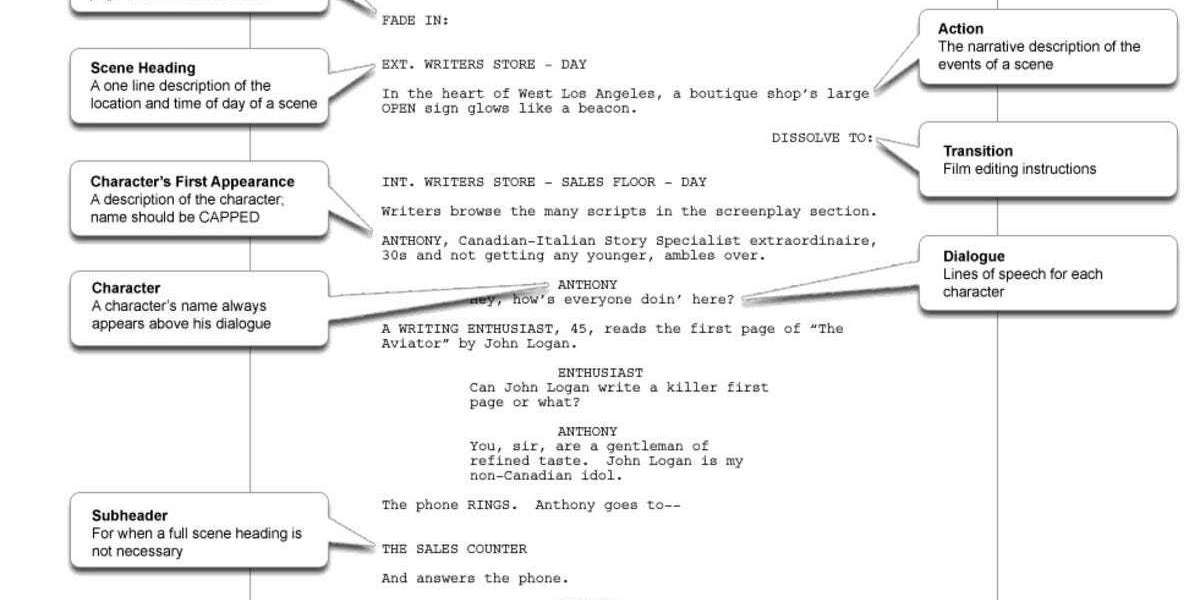When it comes to screenwriting, your story might be brilliant, but if it’s not presented in the right way, it may never get the attention it deserves. Industry professionals agents, producers, and directors receive countless scripts, and the first thing they notice isn’t your plot or dialogue, but your script’s format and structure. Proper formatting and adherence to industry standards are your passport into the professional world of screenwriting.
This blog will guide you through the essential rules and expectations of professional script formatting, so you can present your screenplay with confidence and clarity.
Understanding the Importance of Industry Standards
Industry standards in screenwriting refer to the set of rules and conventions that govern how a script should look and read. They ensure that every screenplay follows a consistent structure, allowing readers to quickly navigate through scenes, dialogue, and descriptions. These guidelines help decision-makers focus on your story instead of being distracted by inconsistencies or formatting errors.
Writers who take the time to study screenplay formatting tips are better equipped to present a polished script that looks as professional as those produced by the big studios. In a world where first impressions matter immensely, following industry standards is a sign of respect for the craft and the professionals who review your work.
The Essentials of Script Formatting
When it comes to formatting, there’s no room for improvisation. Screenplays are typically written in Courier 12-point font with standard one-inch margins. Each page roughly equals one minute of screen time, so a 100-page script translates to about a 100-minute film. The proper use of spacing, capitalization, and layout ensures the story flows visually and logically.
Screenwriting software like Final Draft, Celtx, and WriterDuet make this process easier by automatically applying formatting rules. However, understanding the principles behind these conventions such as where to break a scene or how to format dialogue is equally important. The visual rhythm of your pages can influence how a reader perceives the pacing and professionalism of your story.
Structure and Page Count Expectations
Beyond formatting, structure is another critical element. Most screenplays follow the classic three-act structure:
Act One (Setup): Introduces the characters, world, and main conflict.
Act Two (Confrontation): Builds tension as the protagonist faces increasing obstacles.
Act Three (Resolution): Delivers the climax and conclusion.
A standard feature-length script usually falls between 90 to 120 pages, depending on the genre. Comedies tend to be shorter, while dramas and thrillers may run longer. Maintaining proper pacing throughout these acts helps ensure that your script aligns with industry expectations and keeps readers engaged.
Key Elements That Professionals Expect to See
There are several essential components that define a professionally written script:
Sluglines (Scene Headings): Clearly identify the scene’s location and time of day (e.g., INT. OFFICE – NIGHT).
Action Lines: Describe what the audience sees on screen, written in the present tense.
Dialogue: Centered on the page with the character’s name in uppercase above it.
Parentheticals: Short notes that clarify tone or delivery, used sparingly.
One of the most common rookie mistakes is writing overly detailed action or description blocks. Keep your writing tight and visual let the director and actors interpret rather than dictate every movement. Proper formatting of these elements shows that you understand how scripts are read and produced.
Common Mistakes to Avoid
Even experienced writers can fall into formatting traps. Here are a few pitfalls to watch for:
Overusing camera directions such as “ZOOM IN” or “CUT TO.” Unless essential, these are the director’s domain.
Dense paragraphs that resemble novels rather than screenplays white space is your friend.
Inconsistent capitalization or incorrect scene headings that confuse the reader.
Mixing prose writing with screenplay conventions screenwriting is visual, not literary.
Mastering these details takes time, but every adjustment you make enhances your credibility. Remember, industry readers can spot formatting errors instantly, and that can make or break your first impression. Professionalism in layout reflects discipline in storytelling. Writers who follow screenplay formatting tips and standards signal that they understand how the industry works.
Tools and Resources to Stay Updated
Fortunately, staying aligned with industry standards is easier than ever. Screenwriting software automates much of the formatting, and online resources provide templates, checklists, and sample scripts. Reading successful screenplays especially those of films similar to your genre can be an invaluable learning tool.
You can also explore script coverage services, writing communities, and workshops to receive feedback from professionals. Many of these resources highlight evolving standards, ensuring your script meets the current expectations of studios and production companies.
Conclusion
Understanding and applying industry standards is not about restricting creativity it’s about giving your story the best chance to shine. When your formatting is clean, your structure sound, and your presentation professional, your screenplay stands out for the right reasons.
By mastering these conventions, you prove to industry professionals that you’re not just a storyteller you’re a serious screenwriter ready for production. In an industry where the smallest detail can influence perception, adhering to professional standards is your first step toward success.








